Why you can trust Tom's Hardware
To read about our monitor tests in-depth, please check out Display Testing Explained: How We Test PC Monitors. We cover brightness and contrast testing on page two.
Uncalibrated – Maximum Backlight Level

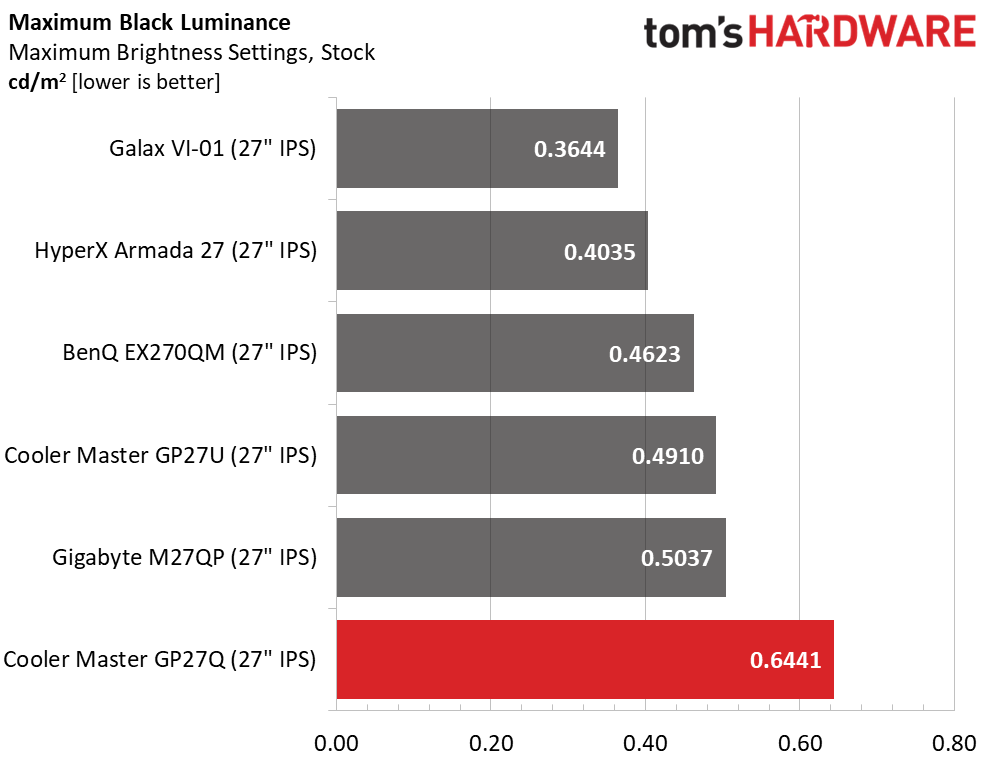
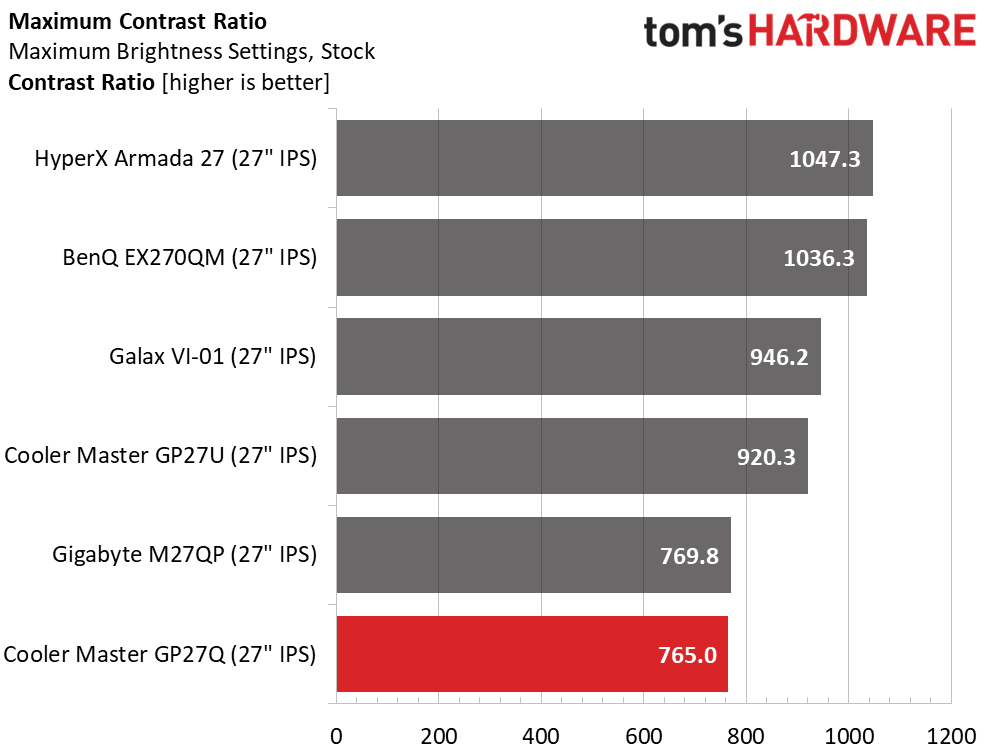
Cooler Master claims 600 nits for the GP27Q, but I measured just under 500. And it’s just as well. No SDR image will benefit from such a high peak output level unless you’re viewing it in bright sunlight. In an indoor environment, 500 nits is painfully bright. The issue I have is that lower levels are hard to achieve. The GP27Q goes down to 55 nits which is good, but each click of the slider changes the setting by 5 to 7 nits. It’s hard to hit a specific spec like 200 or 120 nits right on the head.
Black levels are fairly high, making the default contrast ratio high as well. 765:1 is below average among IPS panels. You’ll want to reduce the local dimming for SDR content to get the best possible image.
After Calibration to 200 nits
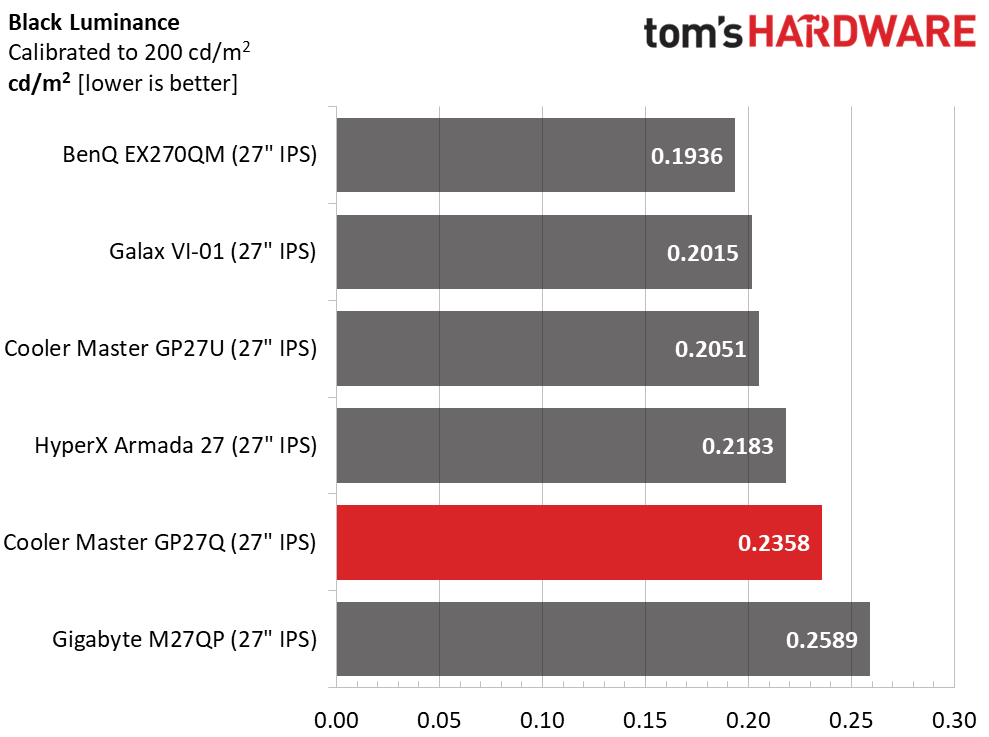
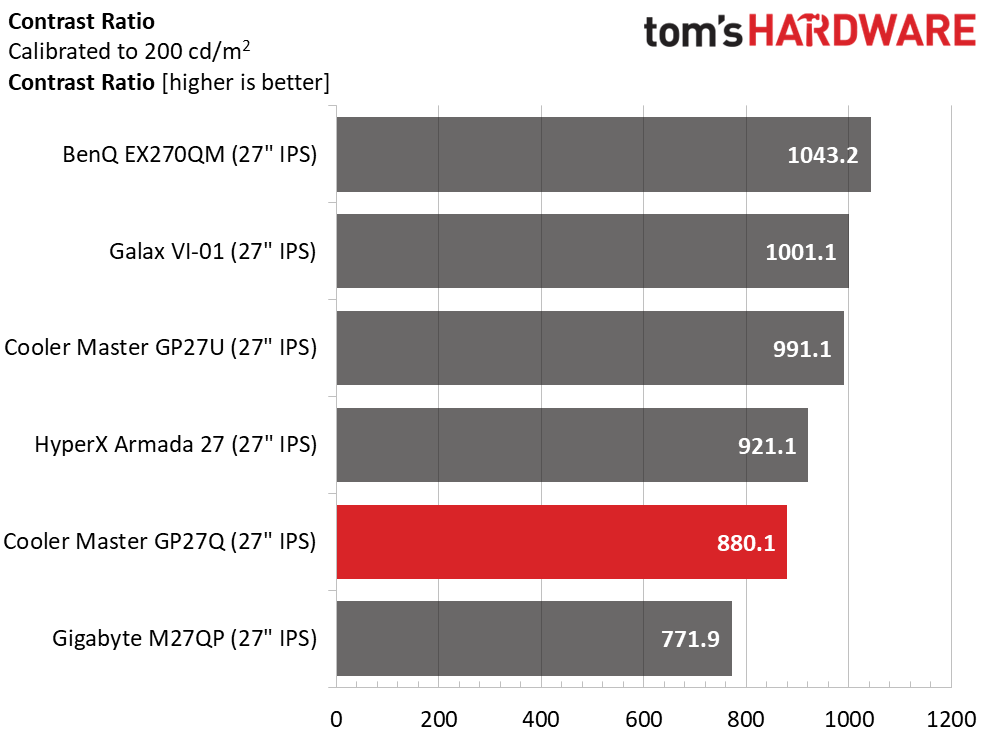
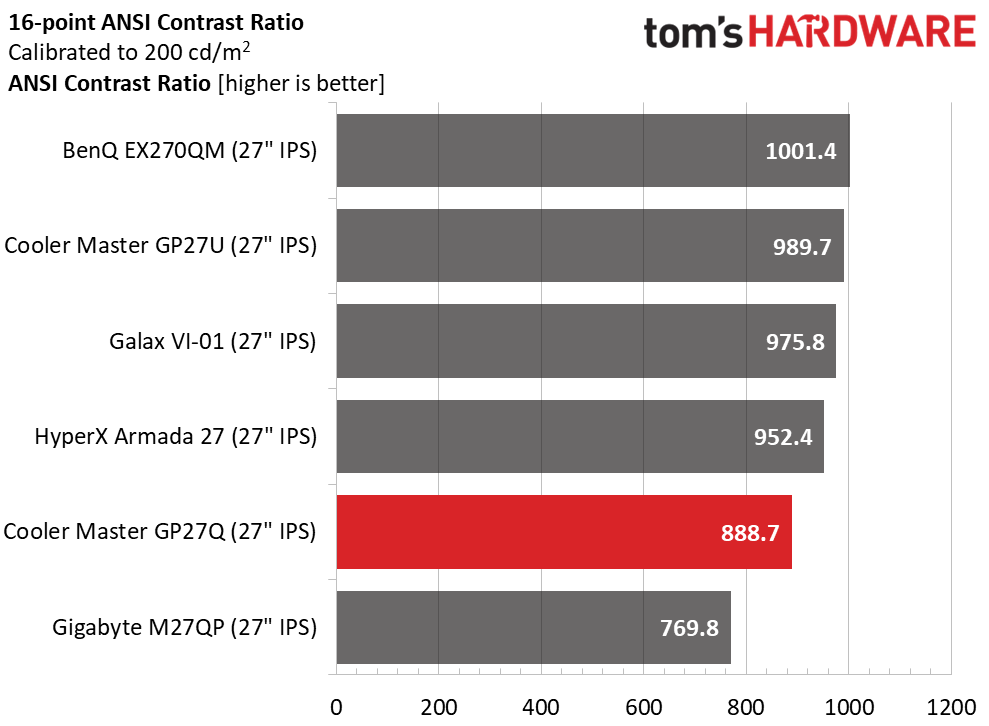
Calibration improves contrast to 880.1:1, but I still prefer the image with local dimming on low. Contrast performance is still below average in the IPS monitor category.
ANSI contrast is almost identical to static at 888.7:1. This is a point in favor of Cooler Master’s quality control which is excellent in all respects. Like the static test, local dimming renders the ANSI value infinite since the black zones have the backlight turned off.
MORE: Best Gaming Monitors
MORE: How We Test PC Monitors
Get Tom's Hardware's best news and in-depth reviews, straight to your inbox.
MORE: How to Buy a PC Monitor
MORE: How to Choose the Best HDR Monitor
Current page: Brightness and Contrast
Prev Page Response, Input Lag, Viewing Angles and Uniformity Next Page Grayscale, Gamma and Color
Christian Eberle is a Contributing Editor for Tom's Hardware US. He's a veteran reviewer of A/V equipment, specializing in monitors. Christian began his obsession with tech when he built his first PC in 1991, a 286 running DOS 3.0 at a blazing 12MHz. In 2006, he undertook training from the Imaging Science Foundation in video calibration and testing and thus started a passion for precise imaging that persists to this day. He is also a professional musician with a degree from the New England Conservatory as a classical bassoonist which he used to good effect as a performer with the West Point Army Band from 1987 to 2013. He enjoys watching movies and listening to high-end audio in his custom-built home theater and can be seen riding trails near his home on a race-ready ICE VTX recumbent trike. Christian enjoys the endless summer in Florida where he lives with his wife and Chihuahua and plays with orchestras around the state.
-
cknobman Finally something not obcenely priced!Reply
Also if you want the 4k version of this monitor for only $899 you can buy the ktc m27p20 pro off amazon.
KTC is the OEM that makes these monitors for Cooler Master.
KTC also sells a 27 1440p model similar to the one reviewed here but with a VA panel for $500. -
dm29 Dear Christian, please check Cooler Master website. There are updates that allow for both changing settings in HDR mode and use VRR and HDR along.Reply -
ohm-ish It has G-sync, but does that mean I can just hook it up with one usb-C cable from computer, and have G-sync?Reply
Or would that require using the displayport?